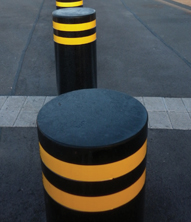British gardeners know there’s a right and a wrong time of year to plant seeds. The same goes for anti-terrorism bollards, or Vehicle Security Barriers (VSBs) to use the jargon. According to the official CPNI (Centre for the Protection of National Infrastructure), you not only have to consider the specification of the concrete, but what CPNI call the curing environment.
Curing is a very important final step in the installation process because hydration takes place in this phase. Briefly, hydration is a chemical reaction between the cement and water in the concrete mix. Given the right conditions, according to CPNI, curing is a rapid process – alrgely happening within days.
Due to rapid curing early in the process, it is CPNI say important the correct curing conditions are maintained, especially during the first seven days. Extremes of temperature will greatly influence the curing process; a temperature range of 10 to 30 degrees C is preferable. Below 10 degrees C, the curing process slows and below 5 degrees C it practically stops. Care must be taken when concrete is cast in winter. If the water in the concrete is allowed to freeze, the concrete will be damaged, possibly so much that it will be unfit for use, CPNI warn. Even if the temperature does not drop below freezing point, the concrete will not gain strength as quickly as it would during warmer months.
When casting in hot weather, CPNI suggest that installers resist the temptation to add more water to compensate for the increased loss of water from the concrete through evaporation, as that might only make the cured concrete less durable.
For the advice document in full visit the CPNI website: http://www.cpni.gov.uk.
Picture: barriers outside Wembley Stadium in north London.










